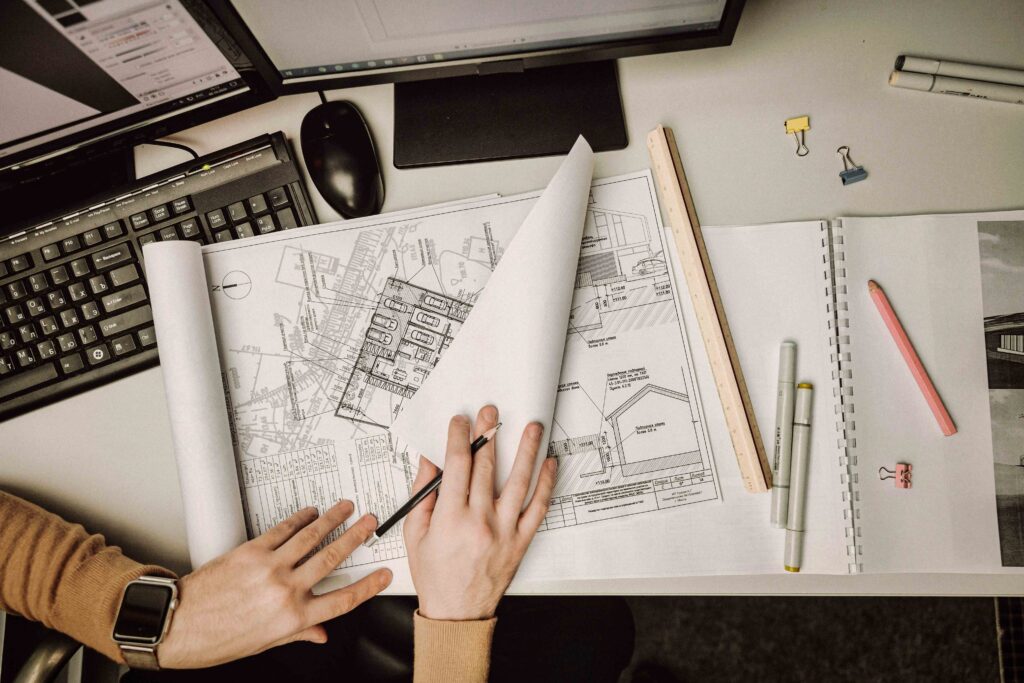
Every field of study presents its own challenges. The cycle of memorizing information, reproducing it on an exam and then quickly forgetting it afterward, all in pursuit of good grades for future evaluations, is a reality that we live in. No matter what subject you choose, it requires intense focus, hard work and dedication to achieve your goals. The study of architecture comes with it’s own set of obstacles, perhaps not the ones you might expect.
Handful of Gears for One Drawing
So, as a first year student, they’ don’t get to directly draw on computer software. First they have to master their hand drawing, which helps them overcome any initial challenges with maintaining proper scale and proportion. This is very important because in the the line of architecture and building design, scale sense is everything. An architect must be able to instinctively gauge the proportions between elements, such as a wall and a piece of furniture. If these elements are not proportionate, it becomes difficult to determine whether the furniture will actually fit within the room.
To accurately draw a scaled plan of a design, students need a variety of tools and instruments.
- Sketchbook: A constant companion for capturing ideas and refining concepts on the go.
- Copic Markers: High-quality markers for adding vibrant color, depth and shading to architectural renderings.
- Parallel bar: Essential for drafting straight lines and ensuring accuracy in every plan.
- Set squares: Vital for drawing precise angles, a staple in any design project.
- Circular template: A quick solution for perfectly scaled circles and curves in complex layouts.
- Different nib sizes of Mechanical pencil: Provides versatility in line weight, crucial for detailed drawings.
- Tracing Paper: Ideal for refining designs, overlaying changes, or developing ideas through multiple iterations.
- Model making tools: A collection of instruments like precision cutter, mats, adhesives and all essential for bringing architectural concepts to life in physical form.
These are essential for precision and they must carry them at all times since this work isn’t just for homework; it’s also part of their classwork. As a result, a large carrying bag isn’t sufficient and the hands are often full as they move from place to place.
Even the classrooms in an architecture department are unique. Known as “design studios,” they occupy larger spaces to accommodate each student’s needs. The tables are big enough for drafting on large sheets of paper and for building models.
Multi-Tasking
As the title implies, an architect’s role demands the mastery of many skills. In architectural studies, theory courses for licensing exams are just as the design assignments. Therefore, constant pressures comes from both theory & sessional courses.
Architecture is basically a five-years course divided into ten semesters. In each of these semesters, students are required to design 2-3 different projects, with grades based on their designs, conceptualization, drawings and presentation. Completing even a single project while maintaining focus on each aspect is a challenging task. However, practicing this process over ten semesters cultivates creativity and profoundly transforms a person’s character.
Submission & Deadlines
Weekends aren’t for rest; they’re for catching up on the long list of tasks due the following week. Students often find little time for friends, especially those outside of their architecture program. Sleepless nights & Coffee become their new normal.

When a design submission is due, students must create a physical model and produce clean sets of drawings, all within a tight deadline to meet the extensive list of requirements. And inevitably, Murphy’s Law kicks in: “If anything can go wrong, it will go wrong.” The printer fails at the last minute, computer drawing programs crash and power outages make it feel like the world is conspiring against you.
The Jury
After all the hard work, countless sleepless nights and immersing themselves in the passion of their design, a student must face the jury. Here, they present their drawings and physical model to a panel of teachers – some of whom have been teaching for years and others who are practicing professionals in the field. These experts will ask questions, evaluate the design and grade it on the spot. It is as intimidating as it sounds.
Like any other class, there will be top performers and those who rank lower. Everyone puts in a similar level of hard work; however, it’s not the effort that gets recognized but the ideation and designs, which will naturally differ from one student to another.
In conclusion, Frustration and doubt are inevitable. Even those who do well in the jury often don’t know until the last minute whether their project will impress the teachers. Stress is a constant and it’s crucial to be prepared for it.


